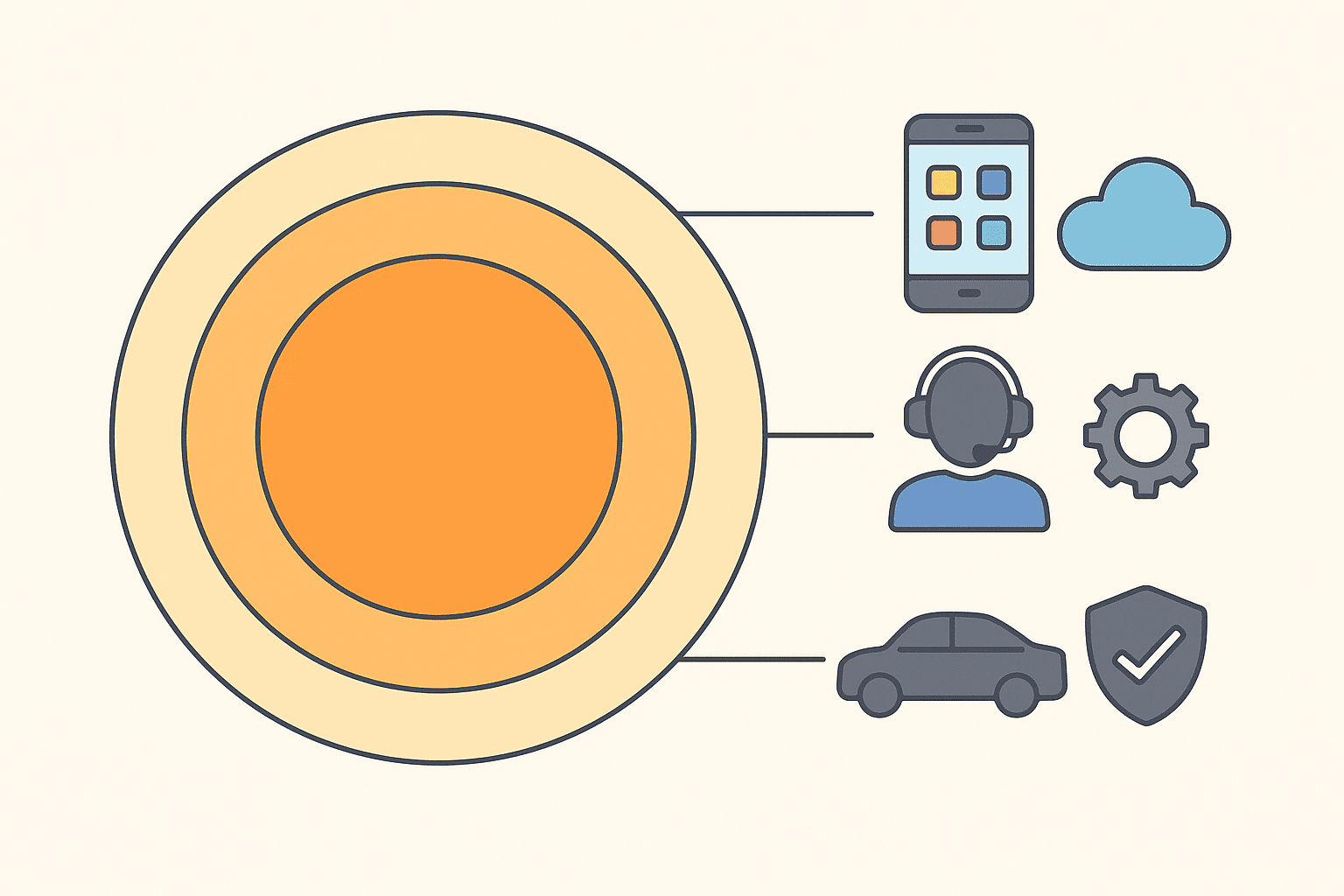Augmented Product: Powerful Examples, Benefits, and Strategies

Introduction to Augmented Product
In today’s fast-paced business world, simply offering a core product is no longer enough to win customer loyalty. Brands must go beyond the physical product and add value through extra services, benefits, and experiences. This is where the concept of the augmented product comes in.
The augmented product refers to all the additional elements that surround a core offering, such as after-sales support, warranties, digital apps, loyalty programs, and customer experiences. In marketing, this strategy transforms an ordinary purchase into a memorable journey that customers are willing to repeat.
What is an Augmented Product?
An augmented product is more than the tangible item a customer buys—it’s the combination of features, services, and emotional experiences that create added value. For instance, when you buy a smartphone, the device itself is the actual product, but the free updates, warranty, brand prestige, and ecosystem of apps form the augmented product.
Core Product vs. Actual Product vs. Augmented Product
To fully grasp the concept, let’s break it down into three layers of a product:
-
Core Product – The main benefit (e.g., communication for a phone).
-
Actual Product – The physical product with features (e.g., iPhone, Samsung Galaxy).
-
Augmented Product – Extra value beyond the physical product (e.g., iCloud storage, Genius Bar support, extended warranty).
Key Features of an Augmented Product
Value-added Services
Services like free delivery, installation, and training help customers get more from their purchase.
Branding and Differentiation
Augmented products help brands stand out. Think of how Apple differentiates itself through design, ecosystem, and status appeal.
Customer Experience Enhancement
Personalized services, easy returns, and premium packaging create positive emotional connections.
Digital and Technological Integrations
Smart apps, cloud storage, and AI-based support add convenience and modern appeal.
Examples of Augmented Products in Real Life
Smartphones and Digital Ecosystems
Apple’s iPhone isn’t just a phone—it comes with iOS updates, iCloud, App Store, and AppleCare.
Automobiles with After-Sales Services
Brands like Tesla offer regular software updates, extended warranties, and premium roadside assistance.
Retail and E-commerce Augmented Products
Amazon Prime membership turns regular shopping into a complete ecosystem with streaming, free shipping, and exclusive deals.
Hospitality and Tourism Industry
Luxury hotels offer loyalty programs, free upgrades, concierge services, and personalized guest experiences.
Why Augmented Products Matter in Marketing
Competitive Advantage
When products are similar, augmentation creates differentiation.
Customer Loyalty and Retention
Added value makes customers stick with a brand even when competitors are cheaper.
Building Emotional Connections
Experiences like personalized service and exclusive offers foster brand love.
Strategies to Create an Augmented Product
Leveraging Technology and Apps
Integrating mobile apps, AI chatbots, and virtual assistants enhances usability.
Offering Extended Warranties and Guarantees
Security and peace of mind boost purchase confidence.
Designing Premium Customer Support
Fast, helpful, and friendly support elevates brand trust.
Building Loyalty Programs and Memberships
Rewarding repeat customers fosters long-term relationships.
Challenges of Augmented Products
Cost Implications
Providing extra services requires investment, which can affect profitability.
Changing Consumer Expectations
Customers continuously expect more, making it hard to keep up.
Scalability Issues
What works for a small business may not scale for global operations.
Future of Augmented Products in 2025 and Beyond
Integration with AI and IoT
Products will connect seamlessly with smart homes, wearables, and AI-powered assistants.
Personalization and Customer-Centric Innovation
Hyper-personalized experiences will become the new norm, as businesses use big data to tailor every interaction.
FAQs About Augmented Product
Q1: What is an augmented product in marketing?
An augmented product is the extra value a brand adds beyond the actual product, such as services, warranties, and experiences.Q2: How is an augmented product different from an actual product?
The actual product is the physical item, while the augmented product includes additional services and benefits.Q3: Why do companies create augmented products?
To stand out in competitive markets, build customer loyalty, and provide better value.Q4: What is an example of an augmented product?
Amazon Prime, which augments shopping with fast delivery, streaming, and member perks.Q5: How do augmented products improve customer satisfaction?
They enhance convenience, provide security, and create memorable experiences.
Q6: Will augmented products become more important in the future?
Yes, as technology evolves, augmented products will become key to brand differentiation.Conclusion
In 2025, augmented products are no longer just a nice-to-have—they’re essential for staying competitive. By combining physical products with digital tools, services, and experiences, brands can create unmatched value. Businesses that embrace augmented product strategies will not only survive but thrive in the customer-centric future.




